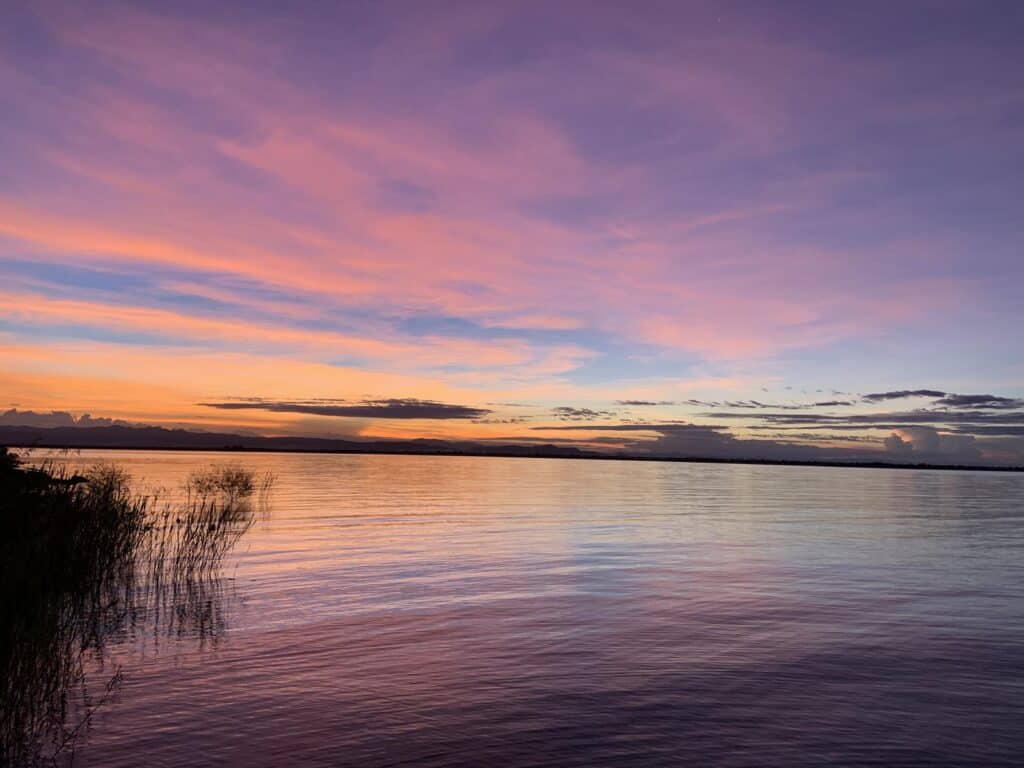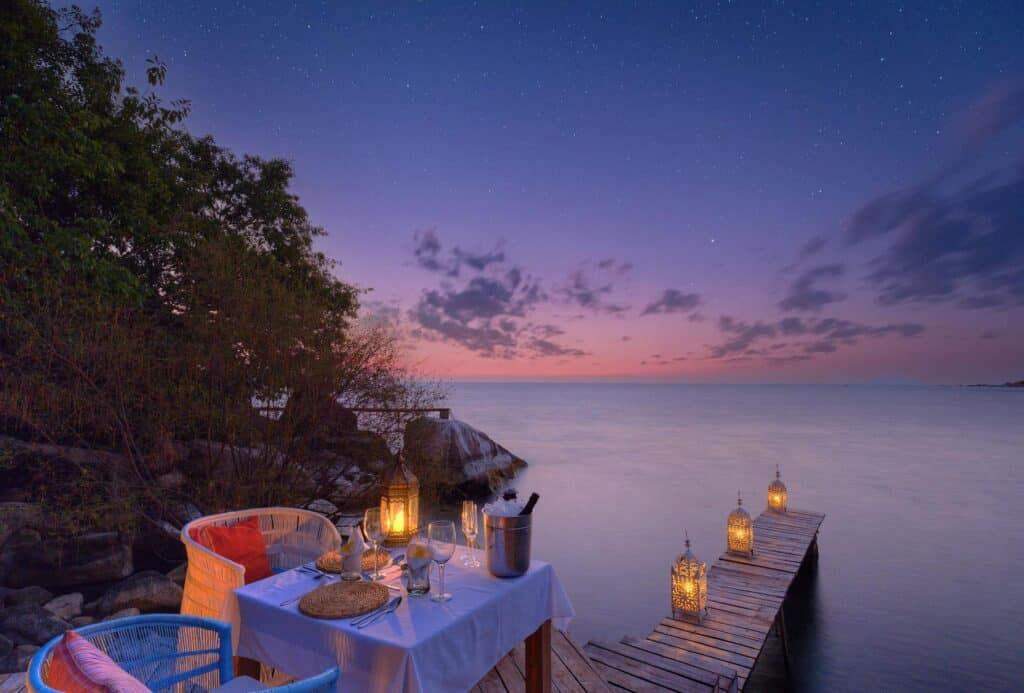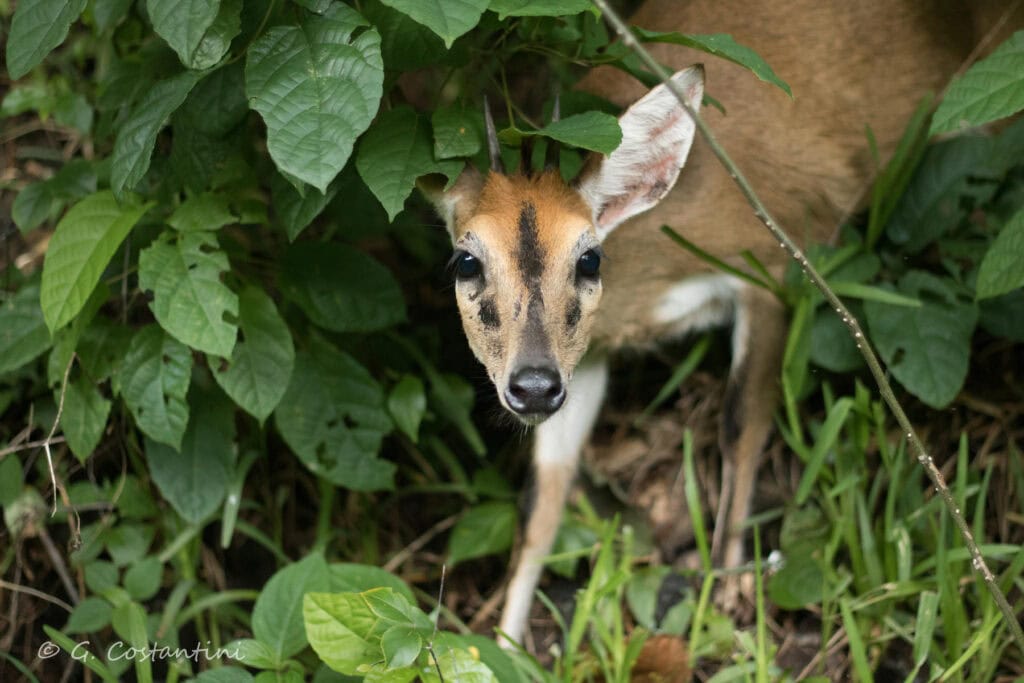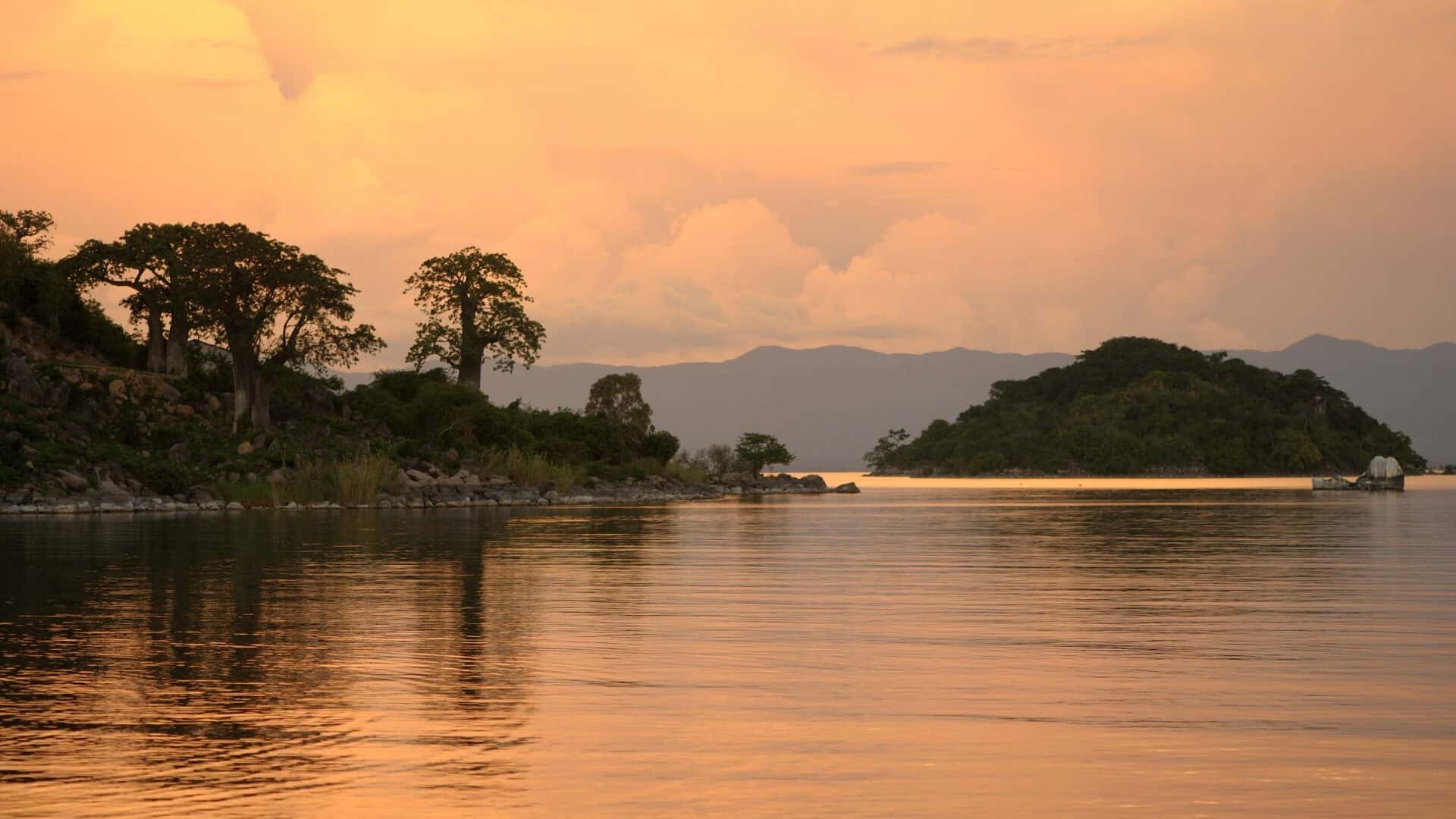There’s a reason travellers call Lake Malawi the jewel of the country. Stretching nearly 570 kilometres along Malawi’s eastern border, it isn’t simply a lake; it’s an inland sea. Golden beaches fringe turquoise waters, fishermen paddle dugout canoes at sunrise, and beneath the surface a kaleidoscope of fish flicker through rocky reefs.
On a Lake Malawi map, you will see it shimmering along the Great Rift Valley, the third-largest lake in Africa and the ninth largest in the world. It holds nearly seven percent of the planet’s surface freshwater and supports hundreds of communities along its shores. At night, the lake glows with pinpricks of light from lanterns strung across fishing boats, a sight that inspired David Livingstone to christen it the “Lake of Stars”.
Its scale is extraordinary. Nicknamed the “Calendar Lake” for its nearly 580 km (365 mi) length and 75 km (52 mi) breadth, the lake plunges to depths of over 700 metres in the north. Its waters are among the clearest of any freshwater body, with visibility often stretching 30 metres or more. Beneath the surface thrives an ancient ecosystem: at least 700 species of colourful Lake Malawi cichlids, unique to these waters and found nowhere else on Earth.

While crocodiles do make their home in the murkier waters of the lake, they don’t usually venture into the clearer waters. Nevertheless, it’s best to only swim in designated areas of the lake, around your lodge, and in areas where there are hotels and resorts.
But Lake Malawi is more than a natural wonder; it’s the country’s lifeblood. Fishing villages line the shore, their rhythms tied to the lake for food, trade, and tradition. Children laugh in the shallows, women dry nets on golden sand, and travellers are welcomed to join in the warmth of everyday life. Away from the villages, entire stretches of beach remain deserted, offering solitude and tranquillity under the African sun.
For visitors, the lake is both a playground and a sanctuary. Days can be spent snorkelling among brilliant fish, kayaking to hidden coves, sailing at sunset, or simply lying back on a stretch of sand that feels like your own. It’s a place where time slows and where nature and culture meet seamlessly, a destination that captures both the heart and imagination.
Cape Maclear and Lake Malawi National Park

At the southern tip lies Cape Maclear, the gateway to Lake Malawi National Park and one of the country’s most vibrant lakeside hubs. Once a quiet fishing village, it’s now a lively mix of sandy beaches, simple guesthouses, and the energy of local life. Fishing boats line the shoreline, children play in the shallows, and the air hums with the rhythm of everyday Malawian life.
Cape Maclear offers easy access to the lake’s crystal waters and rocky islands. Days here are often spent kayaking out to Domwe Island or Mumbo Island, snorkelling among shoals of jewel-bright cichlids, or taking a boat trip to watch fish eagles swoop for their catch. Sunsets at Cape Maclear are legendary, with the golden sky mirrored in the water and dugout canoes gliding past in silhouette.
The village itself is an experience. Wander its sandy lanes, browse local craft stalls, or enjoy freshly grilled fish at a small café. It feels rustic and communal, a place where visitors are invited to witness daily life up close.
That said, while Cape Maclear is atmospheric, it’s often best experienced as a gateway. For travellers seeking barefoot luxury and soulful stillness, Likoma Island is the natural next step.
Islands of Lake Malawi

Scattered across the shimmering waters of Lake Malawi, Africa, are a handful of islands, each with its own character. Some are wild and untouched; others are home to communities where life moves to the gentle rhythm of the lake. Together, they offer travellers a different perspective – slower, more intimate, and deeply connected to both land and water.
Likoma Island
The largest and most celebrated of the lake’s islands, Likoma Island is the star of the lake. Sandy beaches wrap its shoreline, ancient baobabs stand tall, and at its heart rises St Peter’s Cathedral, one of the largest churches in central Africa, built at the turn of the 20th century.
Likoma is where the lake’s magic feels most refined. Days are spent kayaking across sheltered bays, snorkelling or diving among brilliant Lake Malawi fish, or wandering into villages where Malawian warmth is everywhere in open smiles, shared meals, and stories told at sunset. Though it’s close to Mozambique, Likoma has always remained proudly Malawian, carrying the soul and hospitality that give the country its nickname: the Warm Heart of Africa.
Chizumulu Island
Smaller and more secluded than its sister, Chizumulu Island offers a quieter kind of escape. Its rocky shoreline and azure waters frame villages where life has barely changed for generations. Travellers come here less for activity and more for atmosphere – to walk simple paths, sit on the sand at sunset, and feel as though they have stepped into a forgotten corner of the lake.
Chizumulu is usually reached from Likoma by ferry, most famously the Ilala steamer, a journey that adds to its timeless and adventurous appeal.
Nankoma Island
Hidden among the crystal-clear waters of Lake Malawi, the Marelli Archipelago feels like a secret world few get to be a part of. Here on Nankoma Island, the wild takes on a different kind of magic. Instead of lions and leopards, you’ll find a tranquil safari of a different kind. It’s a place where time slows down and the vibrant world beneath the surface takes centre stage.
Spend your days kayaking over shimmering waters, snorkelling among the lake’s endemic cichlids in a kaleidoscope of colour, or walking the island trails to spot vibrant birds and the elusive duiker. This is a place for those who want to feel the pulse of Africa in its quieter, more soulful moments.
Mumbo Island
Neighbouring Domwe, Mumbo Island is a paradise of granite outcrops, white-sand coves, and turquoise waters. Here, simplicity is the luxury. Days are filled with kayaking, swimming, and snorkelling among jewel-bright fish, or simply stretching out on the sand beneath the Malawian sun. Untouched and pristine, Mumbo feels like a world apart – a place where time slows and nature takes centre stage.
Underwater Worlds in Lake Malawi

Lake Malawi is world-famous for its cichlids – at least 700 species of brilliantly coloured fish found nowhere else on Earth. These tiny jewels of evolution thrive in the rocky shallows, flashing electric blues, fiery reds, and golden yellows as they dart through the clear water. Some species build intricate sand “castles” to attract mates, while others carry their young in their mouths until they’re ready to swim free.
For travellers, slipping on a mask and snorkel and going beneath the surface is like entering another world. In just a few feet of water you are surrounded by life, schools of cichlids swirling around you in a living kaleidoscope. Diving reveals even more – caves, rocky outcrops, and vast underwater landscapes where the lake’s unique biodiversity comes alive.
Scientists call Lake Malawi a “natural laboratory of evolution”, but for most visitors it’s simply breathtaking. The sheer variety and brilliance of the fish make every swim unforgettable, and for many this becomes the highlight of a Lake Malawi vacation – a reminder that this inland sea is not only beautiful above the surface but also one of the most extraordinary ecosystems beneath it.
Cultural Encounters Around Lake Malawi
Villages line the shores of Lake Malawi, where fishing has been a way of life for centuries. Sharing a simple meal of freshly caught fish, watching the boats set out at dawn, or joining in traditional songs are some of the most memorable ways to connect with Malawi’s soul. These authentic moments, rooted in daily life, are what give the lake its lasting magic.
Best Time to Visit Lake Malawi

The best time to visit Lake Malawi is between May and October, when the weather is dry, the skies are clear, and the lake is calm, ideal for snorkelling, diving, and beach activities. From November to April the rains arrive, bringing lush green scenery and dramatic sunsets, though travel can be less predictable and malaria is more common. By April the rains ease, and the lake settles back into a more tranquil rhythm.
Wildlife In and Around Lake Malawi

While you won’t find lions here, the waters are teeming with life. Schools of Lake Malawi cichlids fill the reefs, alongside otters, monitor lizards, and birdlife such as fish eagles and kingfishers. Hippos and crocodiles are found in some stretches of the lake, particularly near river mouths. On shore, baboons and other small mammals roam the forests.
How to Get to Lake Malawi
Lake Malawi, Africa, is easily accessible from both Lilongwe and Blantyre. Private transfers by road take you to Cape Maclear, Monkey Bay, or Nkhata Bay, where boats connect to islands and lodges. Charter flights also service some of the lake’s more remote hotels and resorts, making it simple to combine with a Malawi safari.
A Lake Like No Other
Whether you’re diving or snorkelling among rainbow fish, relaxing on golden beaches, or sharing stories in a lakeside village, Lake Malawi is unforgettable. It’s not just a body of water on a map of Africa; it’s the living, breathing heart of the country, offering renewal, connection, and the kind of natural beauty that stays with you long after you leave.
Discover Africa can plan the ultimate Lake Malawi vacation for you. Whether you dream of spending your time snorkelling in the clear water, picture a lodge or resort on the edge of the lake, or want to combine your Malawi safari with stays in the best hotels, we can arrange the holiday of your dreams. Start planning your next Africa chapter now.





















